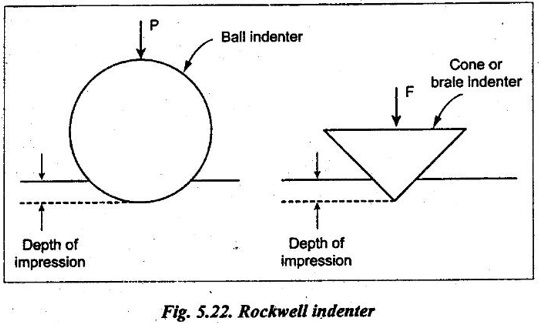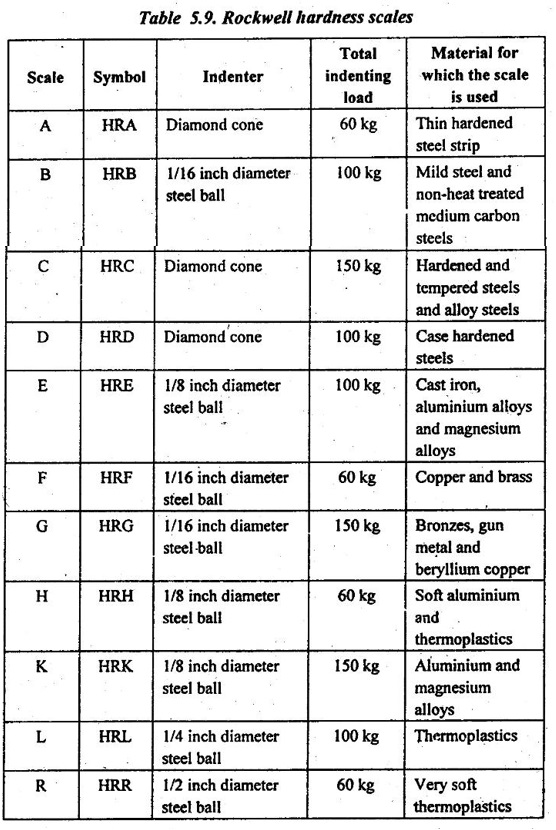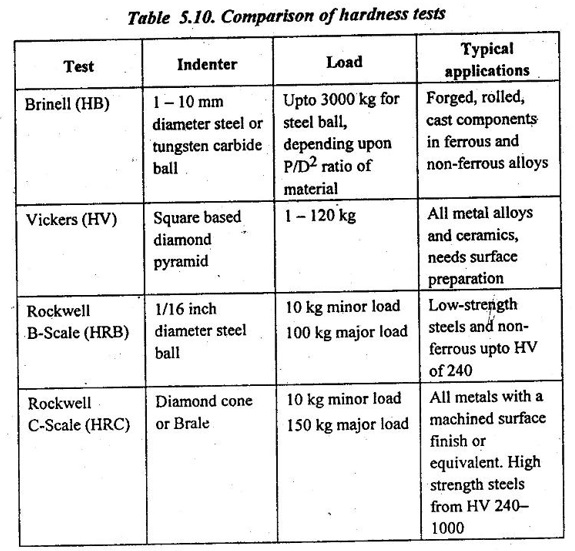The Rockwell hardness test is probably the most widely used methods of hardness testing.
ROCKWELL HARDNESS TEST
✔ The Rockwell hardness test is probably the most widely used methods of hardness testing.
✔ The principle of the Rockwell test differs from that of the others in that the depth of the impression is related to the hardness rather than the diameter or diagonal of the impression, as shown in Fig.5.22.
✔ Rockwell test are widely used in industries due to its accuracy, simplicity and rapidity. In this test, the dial gives a direct reading of hardness; no need for measuring indentation diameter or diagonal length using the microscope.

1. Rockwell Scales
There are many Rockwell scales. But the most commonly used are :
1. B-scale (1/16 inch diameter steel ball indenter; 100 kg load), used to measure the hardness (HRB) of non-ferrous metals.
2. C-scale (120° diamond cone indenter, called a BRALE; 150 kg load), used to measure the hardness (HRC) of steels.
However the various scales and their applicability are presented in Table 5.9.
Table 5.9. Rockwell hardness scales

2. Testing Procedure
The step by step procedure for measuring Rockwell hardness is given below :
(i) The material to be tested is held on the anvil of the machine.
(ii) The test piece is raised by turning the hand wheel, till it just touches the indenter.
(iii) A minor load of 10 kg is applied to seat the specimen. Then the dial indicator is set at zero.
(iv) Now the major load (100 kg for B-scale or 150 kg for C- scale) is applied to the indenter to produce a deeper indenta- tion.
(v) After the indicating pointer has come to rest, the major load is removed.
(vi) With the major load removed, the pointer now indicates the Rockwell hardness number on the appropriate scale of the dial.
3. Advantages of Rockwell Hardness Test
The advantages of the Rockwell test are as follows:
1. Very simple to use.
2. Hardness can be read directly in a single step.
3. Each measurement requires only a few seconds.
4. Since it can be conducted very fastly, it is suitable for routine tests of hardness in mass production.
5. It can be used to test materials over a greater range of hardness because of the many combinations of indenters and loads which are available.
6. It can be used on metallic materials as well as on plastics.
4. Limitations of Rockwell Hardness Test
The Rockwell test is not as accurate as the Vickers test. That's why the Vickers test is usually preferred for research and development works.
Note
The Rockwell hardness number can also be converted into equivalent' Brinell hardness number (BHN) using hardness tables or charts.
5. Comparison of Hardness Tests
A comparison of the most commonly used hardness tests is presented in Table 5.10.

No comments:
Post a Comment